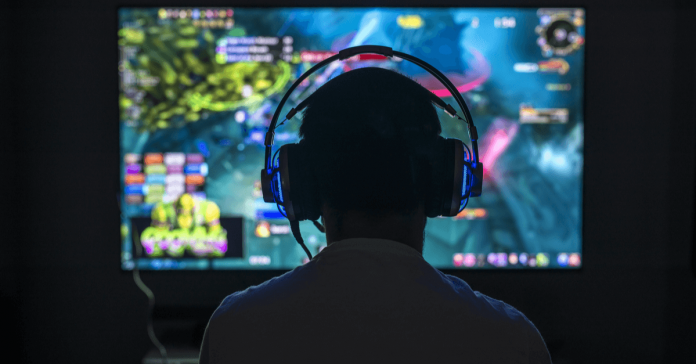This article has been written by Sujata Rathod pursuing a Startup Generalist & Virtual Assistant Training Program from Skill Arbitrage.
This article has been edited and published by Shashwat Kaushik.
Table of Contents
Introduction
AI is generally defined as the wisdom of making computers do things that bear intelligence when done by humans. AI is usually defined as the science of making computers do things that require intelligence, when done by humans. Hence, it refers to a broad set of algorithms deduced from computer science, computer graphics, robotics, and control propositions in general. Hence, AI in gaming could just mean “automated calculation” or a destined and limited set of responses to a destined and limited set of inputs.
What’s AI in gaming
AI refers to the integration of artificial intelligence into the videotape game. This primarily refers to the control of non-playing characters ( NPCs). These characters interact with players more realistically and actively, adding to the absorption of the game. This enhances the gameplay.
AI is also being used in game design to produce more dynamic and intriguing situations and content. This can help inventors produce more varied and absorbing games with less trouble. For illustration, AI might be used to design game situations that are procedurally generated, meaning that they’re created on the cover as the player progresses through the game. This can help keep the game fresh and intriguing for players, as they aren’t simply playing through the same situations over and over again. This makes the game more gruelling and satisfying for players, as they feel they are playing against a good opponent.
Types of AI in gaming
There are two main approaches to game playing in AI
- Rule-based systems
- Machine learning-based systems.
Rule-grounded systems use a set of fixed rules to play the game, while machine learning-based systems use algorithms to learn from experience and form opinions grounded on that experience. They induce models grounded in algorithmic literacy, which can continue to learn as the data increases. Hence, these become more accurate models with time and experience.
- BOTS or non-playable characters( NPCs): These characters are set up in colourful games. They can completely interact with the player and make the game more realistic to play. Some of these characters can also make it difficult to pass a certain position as they work based on their programming so if they’re programmed to make a position feel hard to pass, it gets difficult for the player.
- Visual effects & realism: AI is also used to make existing games look even better with new-age graphics, natural animations, lighting, reflections, etc. for providing more realistic textures and visual effects, thereby giving a more immersive experience. Game inventors use AI to enhance the graphic designs of games that existed in earlier forms and make them look more natural and closer to real life.
- Voice & speech recognition: AI uses Natural Language Processing( NLP) to make the game feel more realistic. You, as a player, can talk to the other players in the game, and they can reply to you each time by using this system by the AI. SIRI and CORTANA are a few exemplifications of this nature.
- Music: Now, with advanced AI, numerous game inventors are also using AI to make the music for their games. Making music is a task that isn’t easy, so by using AI, we can make the process much quicker and more efficient in the long run.
Benefits of AI in gaming
- Realistic non-player characteristics: NPCs or non-player characters, are the characters in the game who act intelligently as if they were controlled by human players. These characters’ behaviour is determined by AI algorithms and that adds depth & complexity to the game, making it more immersive for the players.
- Enhanced player experience: NPCs can completely interact with the player and make the game more real to play. Some of these characters can also make it delicate to pass a certain level as they work on their programming so if they are programmed to make a level feel hard to pass, it gets difficult for the player.
- Intelligent game balancing & testing :
- AI can be used to balance multiplayer games, ensuring fair & enjoyable experiences for all players. AI-powered testing can simulate hundreds of gameplay scenarios, uncovering hidden bugs & optimising game mechanics more efficiently. AI algorithms can be employed for matchmaking to create balanced teams or opponents based on players’ skill levels and preferences.
- Game AI can figure out the ability and emotional state of the player, and then tailor the game according to that. This could even involve dynamic game difficulty balancing, in which the difficulty of the game is adjusted in real-time, depending on the player’s ability. AI in gaming could even assist in figuring out the player’s next move intent.
- Innovative and creative ideas: AI can also be used to get some out of the box ideas for games. It is a great tool to find fresh ideas, as the games can quickly get repetitive. The companies need to have newer ideas for the games to flourish.
- Game stage design: AI can also be used to make better levels designed for the game to be more playable and more enjoyable for the players. The stages can be designed with increasing challenging levels to make them more enthralling. It has to be challenging yet not frustrating. It is truly a great tool for designers who have to constantly think of game design.
- Player monitoring and well-being:
- Behaviour analytics: AI algorithms can analyse player behaviour to identify patterns, preferences, and areas for improvement. This information can be used to personalise gaming experiences.
- Health monitoring: Wearable devices or in-game sensors can be used to monitor players’ physical health indicators. AI analyses this data to detect signs of fatigue or stress.
- Alerts and breaks: AI can generate alerts or recommend breaks for players based on their health data. This helps prevent extended gaming sessions that may negatively impact well-being.
- Cheating prevention: AI is used at large to help with infidelity, especially in multiplayer games. These games are played by millions of players at the same time and numerous of these players also resort to the practice of infidelity. AI is used to find those players by assaying their gaming patterns and also giving them warnings, either guarding or blocking them straight to make the terrain better for the genuine players.
- Quality assurance: Numerous gaming companies also use AI to test their games. numerous times, newer games that don’t have numerous brigades and games that are generally independent use AI to find bugs in their games and also to fix them so that the gaming can be better by those independent gaming companies.
- Data mining & analytics: AI can be used to understand the number of players. It’s used to check how many players are playing the game and how many are playing a certain kidney of the game. This helps gaming companies concentrate on what’s in demand and enhance their gaming experience.
Most popular AI games
- AI dungeon: AI Dungeon is a single-player/multiplayer text adventure game which uses artificial intelligence to generate content and allows players to create and share adventures and custom prompts
- GTA series: Grand Theft Auto games have been revolutionary for various reasons. It allowed a player to do many things that they wanted to do in an open-world game. There are a large number of NPAs in GTA that allow the player to interact with different characters in the game more realistically.
- Black & White : Black & White, a God video game, combines elements of artificial life and strategy. The player acts as a god whose goal is to defeat Nemesis, another god who wants to take over the world. A primary theme is the concept of good and evil, with the atmosphere being affected by the player’s moral choices.
- Fortnite: A popular game, this game also uses AI to make gaming more dynamic. It uses AI to make the environment change, bring various new events into the games, and change the whole gaming element.
- Civilisation Series: In this game, you can design various ancient civilizations. In this game, AI is used to make the objectives of the game more and more unique and interactive.
Legal framework for gaming in India
The gaming industry in India is one of the fastest-growing industries in the country. The industry is estimated to be worth over $2 billion and is expected to grow to over $5 billion by 2025. The growth of the industry has been driven by a number of factors, including the increasing popularity of mobile gaming, the rising disposable income of Indians, and the growing internet penetration rate.
The gaming industry in India is governed by a number of laws and regulations. The most important of these laws is the Information Technology Act of 2000. This law provides a legal framework for the regulation of online gaming in India. The law prohibits online gambling and betting, and it also regulates the content of online games.
In addition to the Information Technology Act, 2000, there are a number of other laws that apply to the gaming industry in India. These laws include the Cinematograph Act, 1952; the Copyright Act, 1957; and the Trade Marks Act, 1999.
The Cinematograph Act, 1952, regulates the production, distribution, and exhibition of films, including video games, in India. The Copyright Act, 1957, protects the rights of creators of original works, including video games, and the Trade Marks Act, 1999, protects the rights of owners of trademarks, including those used in video games.
The gaming industry in India is also subject to a number of self-regulatory codes. For example, the All India Gaming Federation (AIGF) has developed a code of conduct for its members, which includes a commitment to responsible gaming and the protection of minors.
The legal and regulatory landscape for the gaming industry in India is complex and evolving. Companies operating in this industry need to be aware of the relevant laws and regulations and ensure that they are in compliance.
Here are some of the key challenges facing the gaming industry in India:
- The fragmented regulatory landscape can make it difficult for companies to operate in multiple states.
- The lack of a clear definition of “gaming” can lead to uncertainty about which laws and regulations apply.
- The high cost of compliance can be a burden for small and medium-sized enterprises (SMEs).
- The limited availability of skilled labour can make it difficult for companies to grow.
The gaming industry in India is facing a number of challenges. These challenges include the lack of a clear regulatory framework, the high cost of game development, and the piracy of games. Despite these challenges, the gaming industry in India is expected to continue to grow in the coming years.
AI in gaming and India’s stance
AI in games and India’s stand Artificial intelligence (AI) is rapidly transforming the gaming industry, and India is at the forefront of this revolution. Indian game developers are utilising AI to create immersive and engaging gaming experiences that are captivating players worldwide.
AI is also being leveraged to enhance the overall gameplay experience. AI-driven algorithms can dynamically adjust the difficulty level of the game based on the player’s skill level, ensuring a challenging yet fair experience. Additionally, AI can be used to generate dynamic content, such as procedurally generated levels and quests, providing players with a sense of endless exploration and discovery.
In India, there is a thriving community of game developers who are actively exploring and implementing AI in their games. Several Indian game development companies, such as Dhruva Interactive, have gained international recognition for their cutting-edge use of AI in their games.
The Indian government is also recognising the potential of AI in the gaming industry. In recent years, the government has taken steps to promote the growth of the gaming sector in India. One of the key initiatives is the Digital India initiative, which aims to transform India into a digitally empowered society. The government is also providing financial support and incentives to game developers to encourage the development of innovative games in India.
As a result of these efforts, India is rapidly emerging as a global hub for AI in games. Indian game developers are creating world-class games that are pushing the boundaries of what is possible with AI. With the continued growth of AI in games, India is poised to become a major player in the global gaming industry.
Future of AI in gaming
The global video game market size is projected to hit around USD 610.6 billion by 2032, growing at a CAGR of 10.5% during the forecast period of 2023–2032.
AI will be a critical contributor to redefining the future of the gaming industry. AI in gaming is going to be transformed with more technological advancements. In the future, with AI, the whole game can be developed within a few hours with highly detailed levels. Newer developments, such as personalised gaming experiences, will come out of the content to give an experience that is different for each player. Enhanced natural language processing will make your gaming more and more real.
This language processing will make it real to interact with the characters of the game, such as a person does with a human. The graphical rendering powered by the AI will make the whole gaming experience look more and more real and closer to the real world. AI is also a great option for sound design, making it better for different levels.
Limitations
There are many limitations to AI and they will apply to the gaming industry too. With more time invested in the development of AI, we will see whether it will be able to overcome them or not.
- AI, although quite powerful, still has certain limitations. You can not give commands to the AI in the middle of the game and change the whole mechanics of how the game works.
- You can not develop a whole game just by commanding the AI. Also, there’s a bias that can come into the AI.
- There’s also an ethical issue with AI. If not given proper instructions, AI can add problematic stuff to the game.
Conclusion
AI is a game changer for the gaming industry. The global video game market size is projected to hit around USD 610.6 billion by 2032, growing at a CAGR of 10.5% during the forecast period of 2023–2032. AI has revolutionised what was considered a casual gaming industry. AI games are becoming more personalised, engaging and complex, providing the players with an excellent experience. Hence, this will push the boundaries of unlimited interactive entertainment. With the fusion of AI and gaming, the possibilities are limited only by our imagination.
References
- https://www.precedenceresearch.com/video-game-market#:~:text=The%20global%20video%20game%20market,forecast%20period%202023%20to%202032
- https://www.arm.com/glossary/ai-in-gaming
- https://appinventiv.com/blog/ai-in-gaming/
- https://www.engati.com/blog/ai-in-gaming
- https://builtin.com/artificial-intelligence/ai-games
- https://ai.engineering.columbia.edu/ai-applications/ai-video-games/











